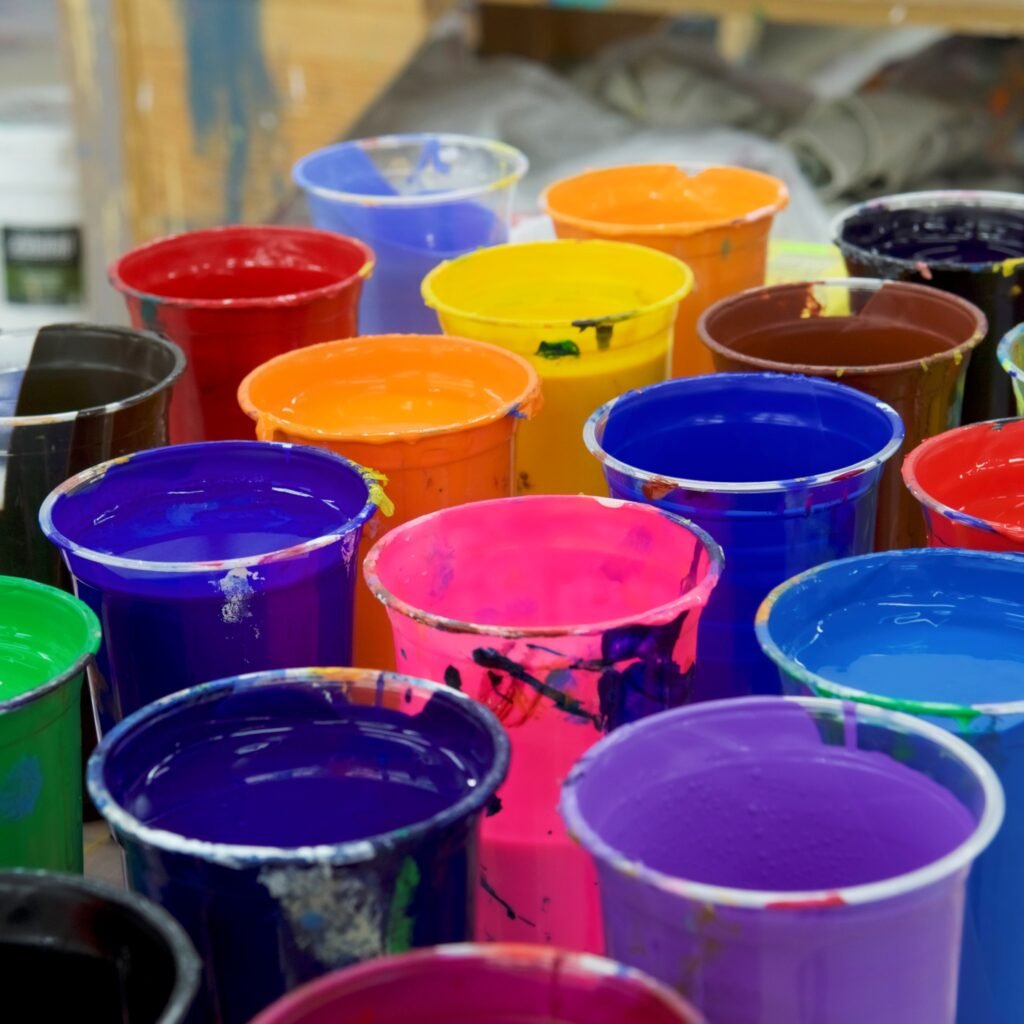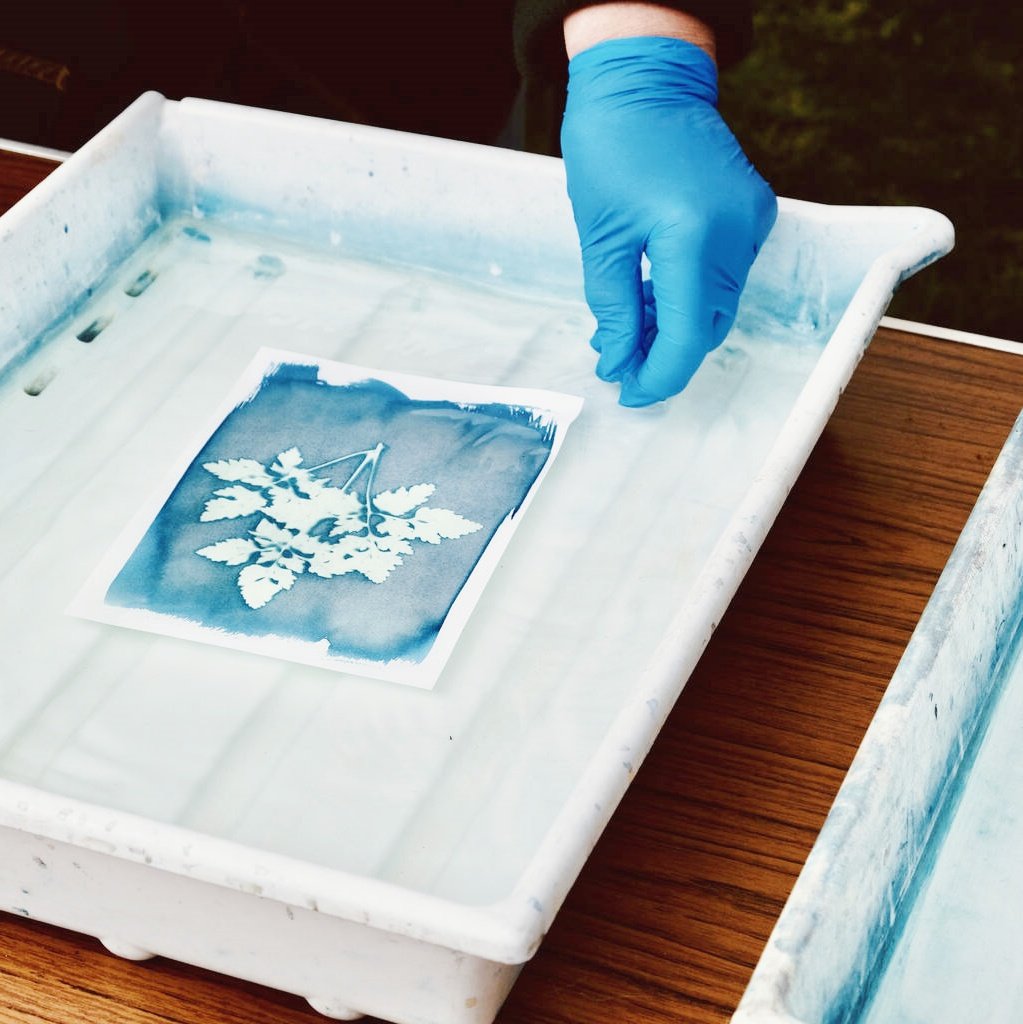Välkommen! Den här guiden utforskar hur specialbläck förbättra textiltryck med expertinsikter från Industrierfarenhet AB
Oavsett om du är nybörjare eller en erfaren skrivare, kommer vi att gå igenom det senaste inom screentryck, miljövänliga lösningar och avancerade tekniker.
Innehållsförteckning
1. Typer av specialbläck
Specialbläck går utöver standardalternativen och erbjuder unika texturer, ytbehandlingar och hållbarhet. Viktiga kategorier inkluderar:
A. Plastisol-bläck
- Hållbar och livfull, perfekt för kläder.
- Exempel:
- Extra grön Plastisol-bläck (miljövänlig)
- Extra svart Plastisol-bläck (hög opacitet)
- Puff Plastisol Ink (3D-textur)
B. Vattenbaserade bläck
- Mjuk känsla, miljövänlig.
- Lägre VOC-utsläpp, utmärkt för detaljerade konstruktioner.
C. UV-härdande bläck
- Snabbtorkande, fungerar på styva underlag (glas, metall).
- Energieffektiv med LED-härdning.
D. Specialeffektfärger
- Metalliska ytbehandlingarSkimrande resultat.
- Lyser i mörkretPerfekt för småsaker.
- SublimationsbläckLivfulla, färgämnesbaserade tryck.
Snabb jämförelsetabell
| Bläcktyp | Bäst för | Viktig fördel |
|---|---|---|
| Plastisol | Kläder, hållbarhet | Hög opacitet, långvarig |
| Vattenbaserad | Miljövänliga projekt | Mjuk handkänsla |
| UV-härdbar | Hårda ytor | Omedelbar härdning |
| Puff/Högdensitet | Texturerade mönster | 3D-effekt |
2. Screentryckstekniker
Bemästra dessa metoder för felfria utskrifter:
A. Installation
- Val av maskantalHögre för fina detaljer (~230 mesh), lägre för fetstilta utskrifter (~110 mesh).
- SkärmemulsionAnvändning Saati Emulsioner eller Ulano Emulsion Removers för rena skärmar.
B. Tryckprocessen
- Sugskrapa tryckJustera för jämn bläckavlagring.
- BlixthärdningLåt lagren delvis torka innan du tillsätter färger.
- RegistreringsnoggrannhetJustera flerfärgade mönster exakt.
C. Felsökning
- Tilltäppta skärmar? Använda Skärmåtervinning tekniker.
- Bläcket fastnar inte? Tillämpas Platten lim eller Plasmabehandling.
3. Hållbarhet inom screentryck
Miljövänliga metoder revolutionerar branschen:
- Vattenbaserade och låg-VOC-bläckMinska skadliga utsläpp.
- LED UV-härdning50% mindre energi än traditionella system.
- AvfallsminskningCTS-system minskar bläckspillet med 50%.
Visste du?
- 42% av skrivarna använder nu vattenbaserade bläck (data från 2022).
- UV-bläck härdar 3 gånger snabbare än plastisol (2–5 sek vs. 60–90 sek).
4. Screentryck kontra DTG: Vilken ska man välja?
| Faktor | Screentryck | Direct-to-Garment (DTG) |
|---|---|---|
| Bäst för | Storbeställningar, specialeffekter | Små partier, fotoutskrifter |
| Kostnadseffektivitet | Lägre per enhet i stor skala | Högre för korta sträckor |
| Bläckalternativ | Plastisol, puff, metallisk | Vattenbaserad CMYK |
HybridspetsKombinera båda för kostnadseffektiva blandade serier av hög kvalitet.
5. Framtida trender
- Smarta bläckTermokrom (värmekänslig) och fotokrom (ljusreaktiv).
- Automatisering: M&R Challenger III trycker på öka hastigheten.
- Konduktiva bläckFör bärbar teknik och IoT-enheter.
Viktiga takeaways
- Matcha bläcktyp efter projektets behov (t.ex. plastisol för hållbarhet, vattenbaserat för mjukhet).
- Prioritera hållbarhet med LED-härdning och avfallsreducerande teknik.
- Hybrida arbetsflöden optimera kostnad och kvalitet.
För djupare dyk, utforska våra guider om:
- Grunderna i screentryck
- Miljövänliga bläck


